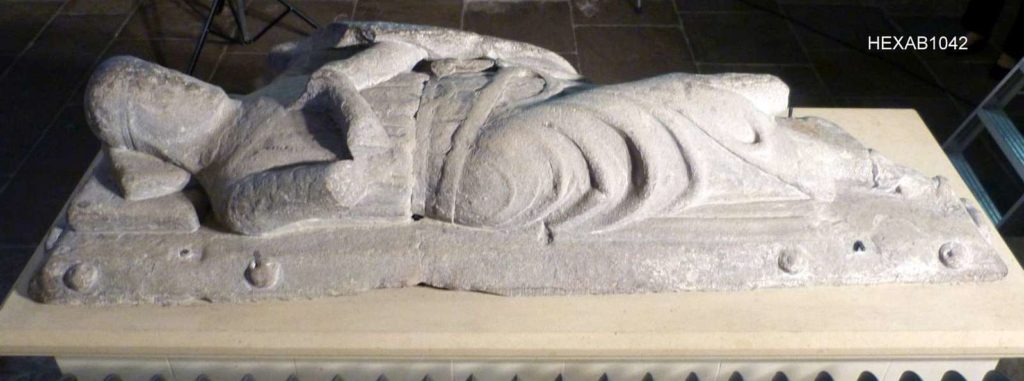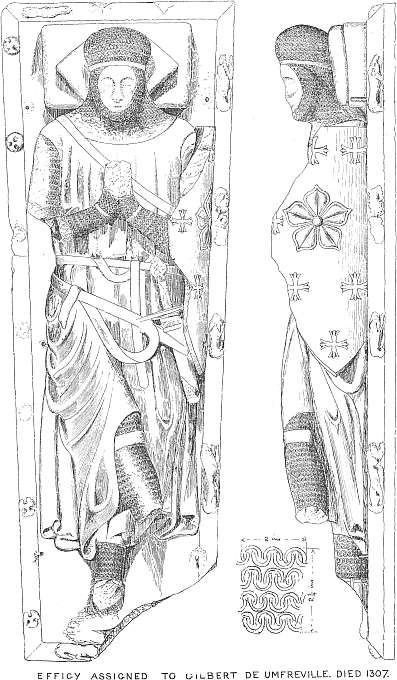Visitor Guide 5: Effigies

Effigies first emerged as commemorative portraiture in the 13th century and over time became full scale, usually recumbent, as in death, and, by the 14th century, with hands together in prayer.

In general, such monumental effigies were carved in stone, marble or wood, and often were painted to resemble life, but on the vast majority of medieval monuments, the paint has long since disappeared. The cross-legged attitude of many armoured figures of the late 13th or early 14th centuries was long supposed to imply that the deceased had served in the Crusades, or had taken crusading vows.
Feet were often supported by stylised animals, usually either a lion indicating valour and nobility, or a dog indicative of loyalty. Sometimes the footrest was an heraldic beast from the deceased’s family coat of arms.
Four effigies within Hexham Abbey date back to the 13th and 14th centuries.
The effigy of Thomas of Tyndale depicts an early 14th century knight who is dressed in mail with his feet resting on a lion.
The effigy of Sir Gilbert of Umfreville, Earl of Angus (1245 – 1307) is in honour of the 13th century nobleman who was a member of the Anglo-Norman family which built nearby Prudhoe Castle. Two further effigies, of unknown early-14th century women, which were found buried in the church graveyard around 1750, were later brought into the church and are now displayed in the north Choir Aisle. Their hands are joined in prayer and much like the effigy of Thomas of Tyndale, their feet rest upon an animal.

